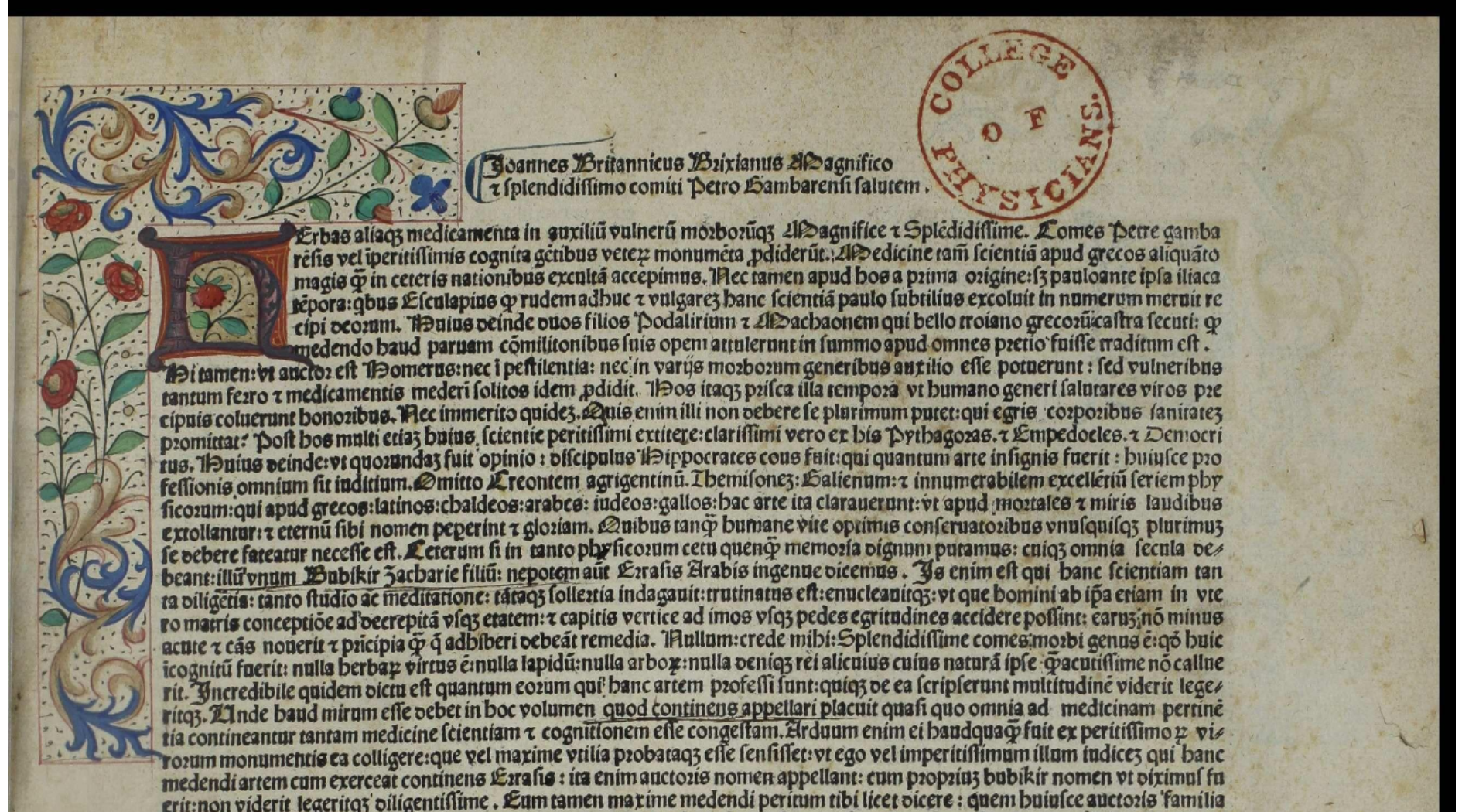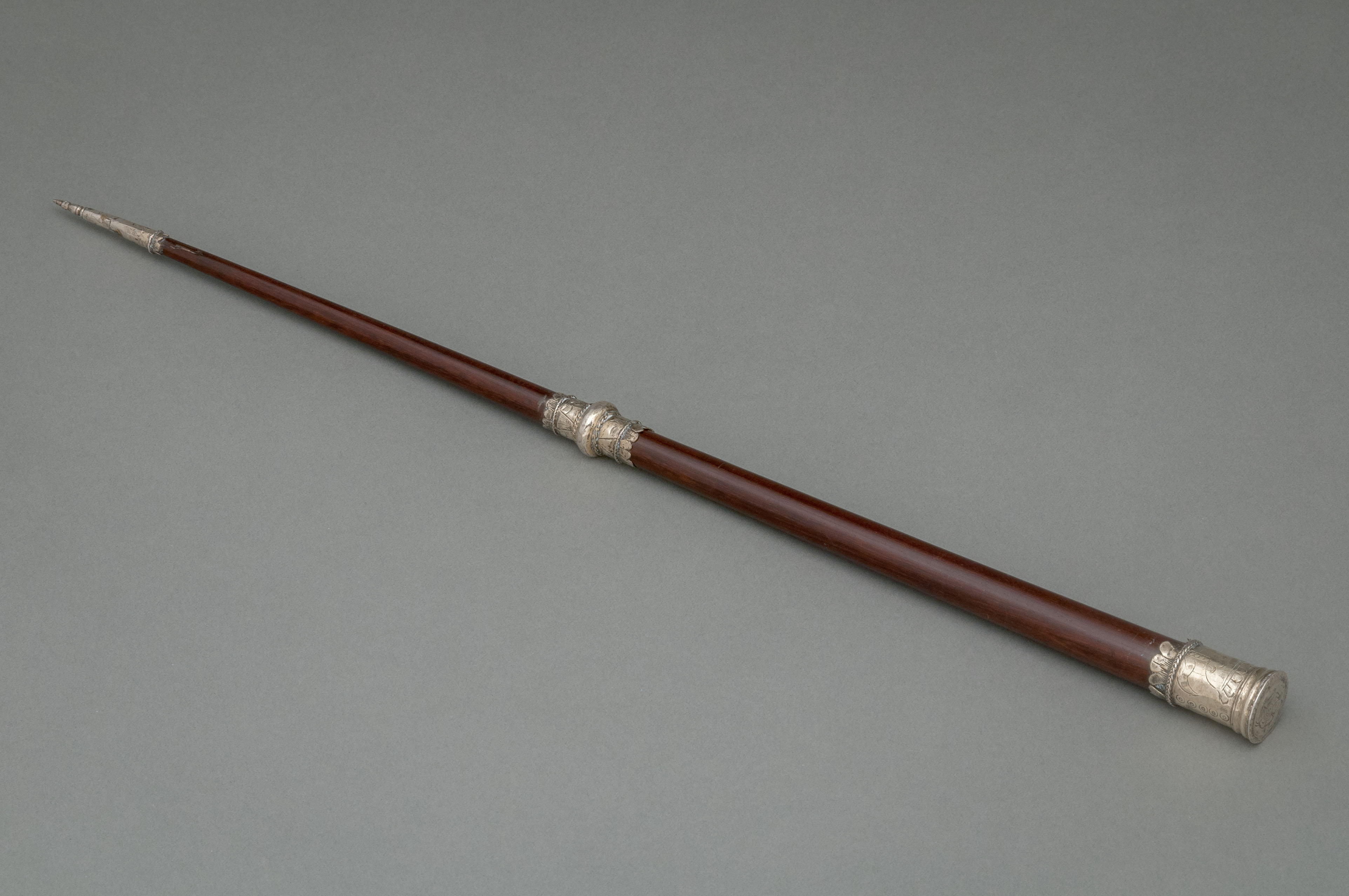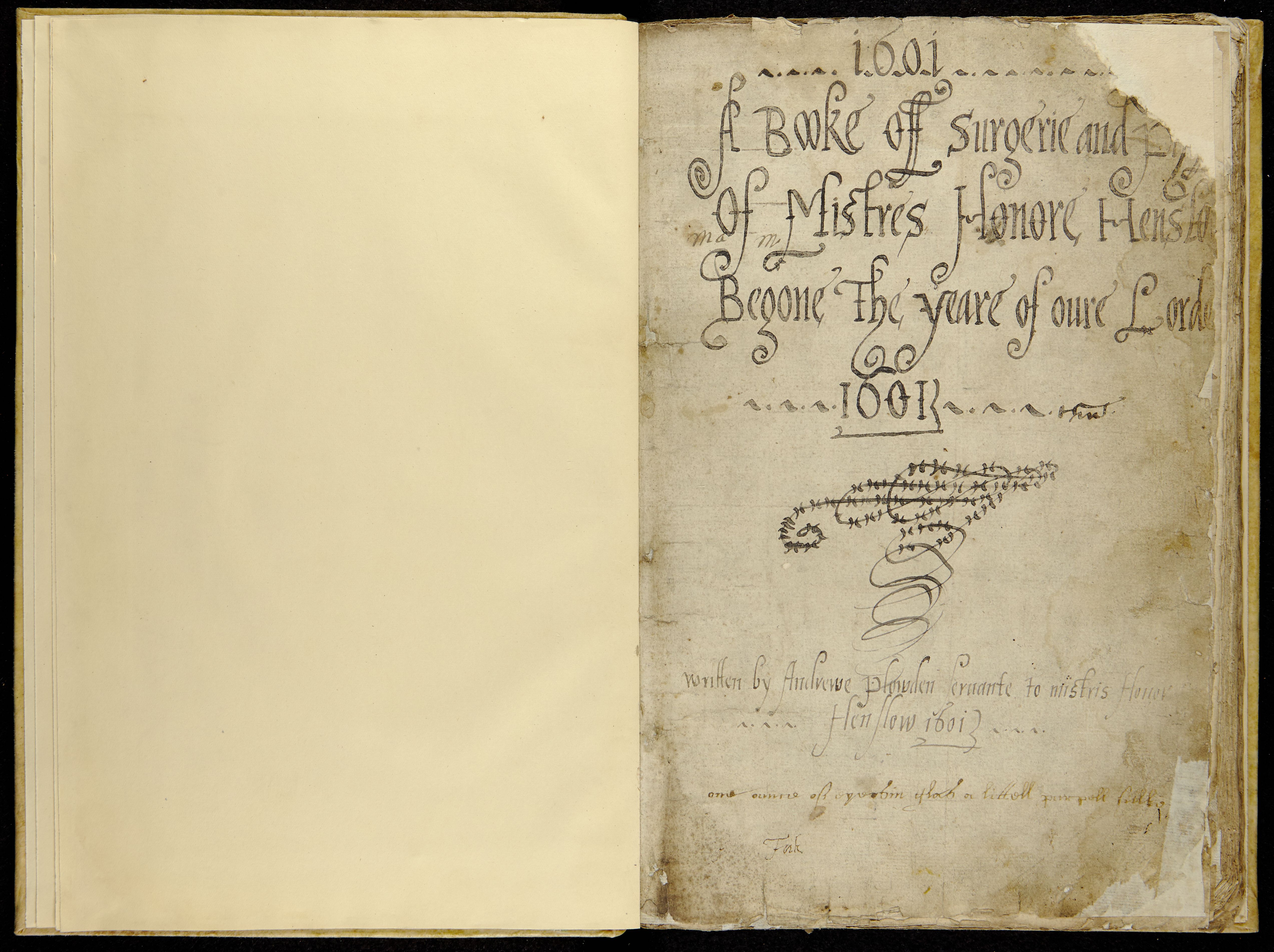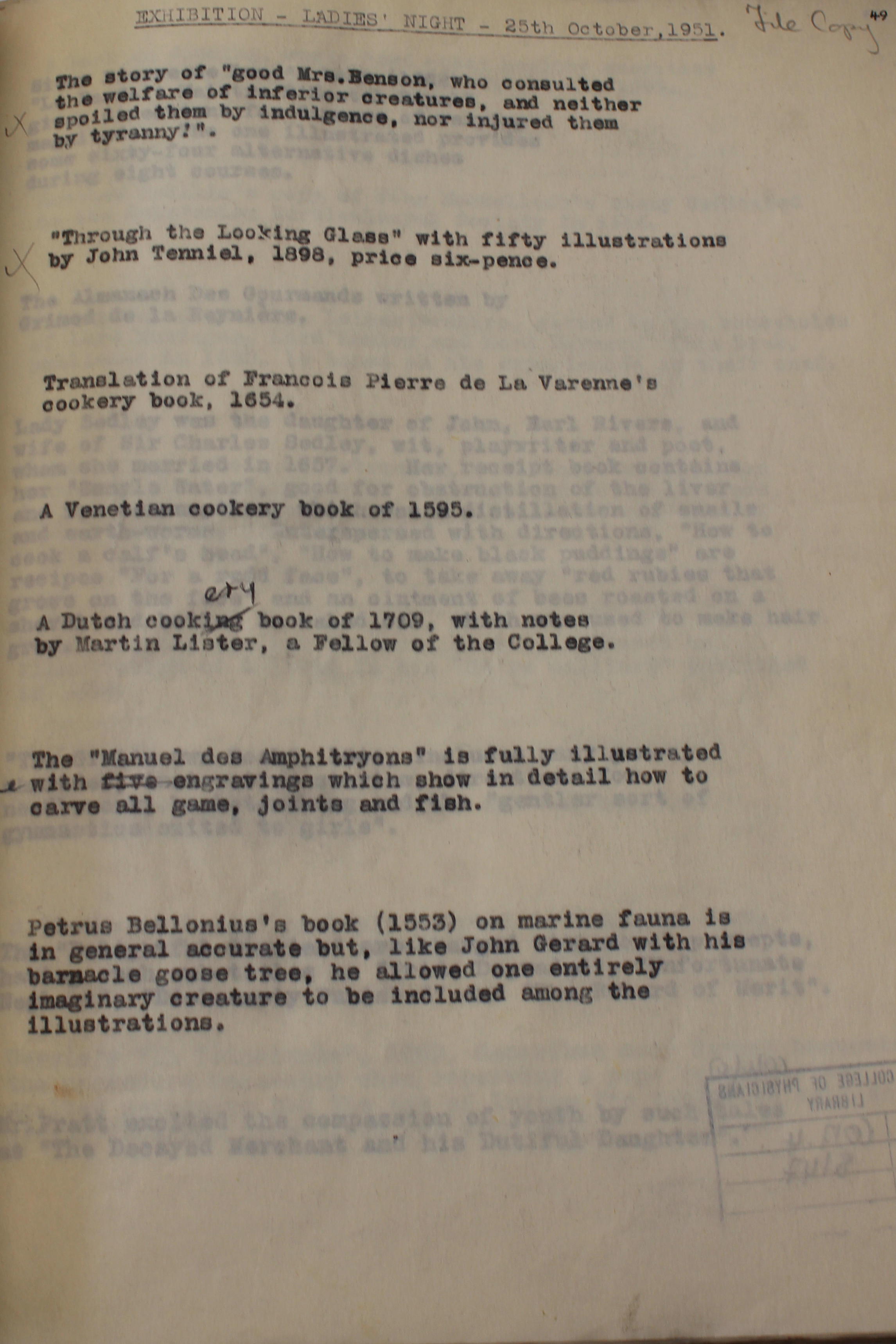The Royal College of Physicians first admitted women as members in 1909 and as full fellows from 1925, but although it made those steps towards equality in the early 20th century, it took much longer for institutional culture to catch up.
The first woman employed by the college, Ina Cooke, faced a battle for respect as she tried to bring order to RCP administration from 1934 onwards. Women appointed to the fellowship were surprised for many years to see the new fellows’ intake form asked for the name of the ‘fellow’s wife’, assuming that all fellows would, perforce, be men, and probably married men. And for several decades, a regular part of the college’s annual roster of dinners and events for its fellows and members were the ‘Ladies’ Night Dinners’.
Ladies’ Nights – sometimes described as ‘Ladies’ night dinner for fellows and members’ – took place twice a year, usually in January or March and in October or December. It was, we presume, an opportunity for fellows and members to bring their wives to dinner at the College. The dinners were advertised alongside college dinners, lectures, examinations and other events in the almanac of useful dates issued in the annual List of fellows and members in the 1950s and 1960s, and then in the college members’ and fellows’ magazine Commentary from 1966 onwards.
We first stumbled across the existence of Ladies Night because of a collection of exhibition catalogues preserved in the Heritage Library: every now and again, the librarians of the time would put together a display of books and documents to help entertain the attendees at Ladies’ Night, and they kept records of what they displayed.
The earliest surviving Ladies’ Night exhibition catalogue dates from 25 October 1951, the dinner presumably having followed that day’s quarterly meeting of fellows. The catalogue is a typescript listing of books that were displayed somewhere in the old RCP building at Pall Mall East, probably in the library. The first few pages make rather unsurprising reading: books on morals and good behaviour, 19th century story books, and above all else: cookery books.
Cookery and recipe books are an undoubted strength of the RCP library and archive collections, and the display included some treasures including Lady Sedley’s receipt book, a Renaissance Italian meat-carving manual, and elaborate meal-planning advice from the master of the French royal household.
These are followed by a few titles on gardening and botany, before the topics branch away into the fields of war (Vegetius’ classic work De re militare), astronomy (Bassantius’ bravura explication of the movement of the heavens using moving diagrams), and astrology (a horoscope for a boy born in 1538). However, out of the 25 books displayed that night, 20 were on stereotypically feminine topics relating to home, hearth and children.
Six months later, on 24 April 1952, the domestic theme was set aside instead for a display of fine book bindings. These included three books rescued from the College library during the Great Fire of London in 1666, and decorative stamps added to book bindings by their owners to demonstrate loyalty to the monarch during the reigns of Elizabeth I and Charles I. Examples were shown from various European countries including Italy, France and Spain as well as books bound by English artisans. The distinctive coat of arms – featuring a standing bear – of Elizabeth I’s favourite, Robert Dudley, also appeared on a book Dudley himself owned, as did one of the oldest medical books in the library, printed in 1478 but rebound in the fashionable French style in the mid-18th century.
Decoration as a theme recurred twice, in April 1958 with displays of colour illustrated books (dominated by books of plants and travel) and ‘The Annals Illustrated’ in April 1960, a display of incidents from college history illustrated pictorially with maps, portraits, artefacts, medical diplomas, and medical works by authors mentioned (usually disparagingly) in the official college records.


Women as protagonists made a single appearance in the April 1953 display: ‘a feminine influence in medicine’. This included a lot of familiar items, many of which have been displayed and written about many times since:
- An early account of the college prosecuting unlicensed practitioners, many of whom were women such as Alice Leevers.
- Works attributed to the medieval women Trotula and Hildegard of Bingen
- Medical works by Elizabeth Cellier, Elizabeth Grey and Elizabeth Blackwell
- The letters of Lady Mary Wortley Montagu
- William Withering’s account of investigating the use of foxglove for heart conditions based on a family recipe used by a Shropshire woman
- Manuscript recipe books by Honore Henslow, Sarah Wigges, Lady Sedley, and Mary Goodson

Though these women and their works might be familiar, they weren’t always described in quite the way we’d do it today. Elizabeth Blackwell is described first and foremost as ‘the wife of the adventurer Alexander Blackwell’. In describing the cases of women held up before the College censors for practising medicine without a licence, the exhibition catalogue starts by saying ‘The College did not exclude women from practice on account of their sex but for want of sufficient knowledge’, without pointing out that until women were admitted to medical courses at universities, their sex would automatically debar them from gaining the required knowledge to become licenced. In other words: hiding behind technicalities and not facing up to structural inequalities.
After 1960 the library didn't organise anymore dedicated ladies’ night exhibitions: the library staff instead added a few extra items to whichever display was already laid out in the library at the time. These were usually commonly displayed ‘treasures’ of the library, such as the Wilton Psalter or the Ortus sanitatis.
The library organised nearly 80 displays in the decade to 1960 – ranging across topics such as music, the royal touch, British physicians in Russia, cardiology or John Dee – and the ladies’ night displays are only a small sample within that. They routinely included books and documents are still considered treasures of the library archives today: all worthy exhibits deserving exposure to wide audiences. However it's certainly true that on balance what topics and exhibits chosen for these displays can be seen as expressing a certain reductive idea of what women, or should we say ‘ladies’, might want to see on an evening out: cookery, plants, pretty pictures and a grudging acknowledgement that women have a long history of involvement with medicine.
The last Ladies’ Night dinner advertised in the College Commentary magazine took place right up until January 1986. Ladies Night had been running concurrently with regular, and presumably rather more gender-neutral, Guests’ Nights for many years. The Guests’ Nights continued after Ladies’ Night had – rightly – been retired.
Katie Birkwood, rare books and special collections librarian
Cristina Dario, assistant librarian
March is Women's History Month

